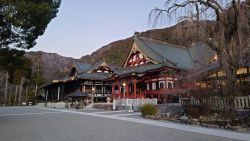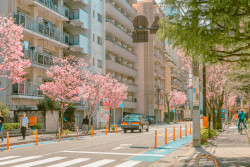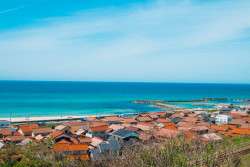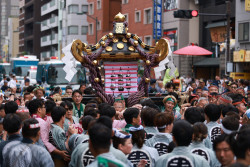
September 4, 2008
Tamai
Munch on sea eel straight from Tokyo Bay at this classic Nihombashi eatery
By Metropolis
Originally published on metropolis.co.jp on September 2008
Behind Takashimaya Department Store in Nihombashi, in a lovely old wooden structure built back when Elvis graduated from high school, sits a shop serving one of Tokyo’s best box lunches (or dinners).
Tamai serves anago, sea eel. You’re probably familiar with unagi, freshwater eel, the dish traditionally eaten on the hottest day of summer, but anago is an altogether different animal.
If you believe the eel bio-sketch at the back of the English menu, anago is lighter than unagi, less sweet, has 50 percent less fat, improves brain function and eyesight, lowers cholesterol, and is chock-full of DHA, Vitamin A and E.
Those virtues aside, it’s just damn good. The thing to order here is the chu (middle-sized) hako meshi, a lacquered box containing a bed of rice flavored with snippets of nori and bits of shiso leaf (¥2,800). Arranged on top are anago fillets: one yaki-age, grilled to smoky perfection, and one ni-age, boiled to a plump softness. Both have been moistened with Tamai’s special anago sauce.
In addition to a cup of miso soup and a saucer of Japanese pickles, you’ll have four condiments on your tray: toasted sesame, slivers of scallion, freshly grated wasabi and a tin-plated rasp flecked with green sudachi zest. On the table is another condiment, a tiny pot of powerful sansho pepper. Use it with care. With five toppings and two styles of anago, you can flavor ten different bites. If you mix condiments, the possible combinations are… well, a lot.
In case you forget, the English menu has step-by-step instructions on exactly how to proceed. It also suggests you should feel free to use the handy wooden spoon when digging in.
When you order, the waitstaff will recommended a cup of eel broth (¥200). Go for it; that’s why there’s an empty soup bowl on your tray. Near the end of the meal, you’ll receive a teapot full of this deeply flavored broth made from dried anago bones. Put a last spoonful or two of rice and eel into the bowl, pour in the broth, add sudachi zest and scallions, and enjoy the savory soup.
Through mid-September, Tamai’s sea eels are sourced from Tokyo Bay. As the season progresses, they’re caught offshore Ibaraki prefecture, then north off the Miyagi coast, and in the winter they’re caught in Kyushu, where the eels reach their largest size.
Sake goes particularly well with anago. Try the reishu, a chilled Masumi Junmaishu (¥800), the gentle Uragasumi Honjozu (¥1,000), the luscious Ginban Ginjoshu (¥1,500), or just stick with bottomless cups of hoji cha (free).
For over 50 years, the lovingly restored building that houses Tamai Anago served as a liquor shop. When the restaurant took over four years ago, the owners didn’t change much. They kept the worn pine flooring, the warm wooden interior and the huge double-door wall safe tucked securely under the steep narrow staircase.
After several spoonfuls of grilled anago, the DHA began to kick in. I felt myself getting smarter, and I already started planning my next visit.








